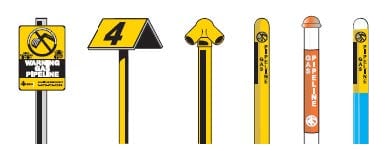It’s generally agreed that pipelines are an extremely safe way to transport energy across vast distances. Here is a look at some of the numbers that back that up:
- A barrel of crude oil or petroleum product shipped by pipeline reaches its destination safely more than 99.999% of the time.
- The number of releases greater than 500 barrels is down 32% since 2011.
- Most incidents do not impact the public or the environment, with 71% of incidents in 2015 occurring and contained wholly within an operator’s facility.
How Pipelines Are Monitored
Pipeline companies take active steps to ensure that health, safety, security, and environmental concerns are addressed throughout the planning, construction, and operational phases of pipeline operations. Pipeline companies work to prevent spills by evaluating, inspecting, and maintaining pipelines in a program called integrity management.
Integrity management includes a wide variety of methods to monitor pipelines, from highly advanced technology to patrolling the pipeline right-of-way. Visual inspections are done regularly by walking, flying, or using drones, and the industry also uses electronic monitoring from high-tech control rooms and patrols inside the pipeline.
Pipeline companies spend millions of dollars on research into new inspection technologies and spend billions on safety each year.
New Technology
Part of the commitment to safety includes investing in new technologies. One such technology is the use of in-line inspection tools or “smart pigs” to determine the condition of the pipeline. Smart pigs can detect corrosion, cracking, or other defects in the pipe wall and are used to plan preventive maintenance. Operators also use this data to plan for future repairs. Smart pigs aren’t the only tool used by the industry to ensure safety: operators have invested financial resources to ensure their infrastructure is reliable, including spending over $2.2 billion in 2014 to evaluate, inspect, and maintain pipelines.
Pipeline operators prepare for the unlikely event of an incident through control room technologies and training to stop the flow of a pipeline quickly upon a release. Operators also develop emergency response plans, deploy resources, and work frequently with local first responders in order to reduce the impacts of any release.
The investment in safety is an investment in the future of the oil and gas industry as well as our country.


